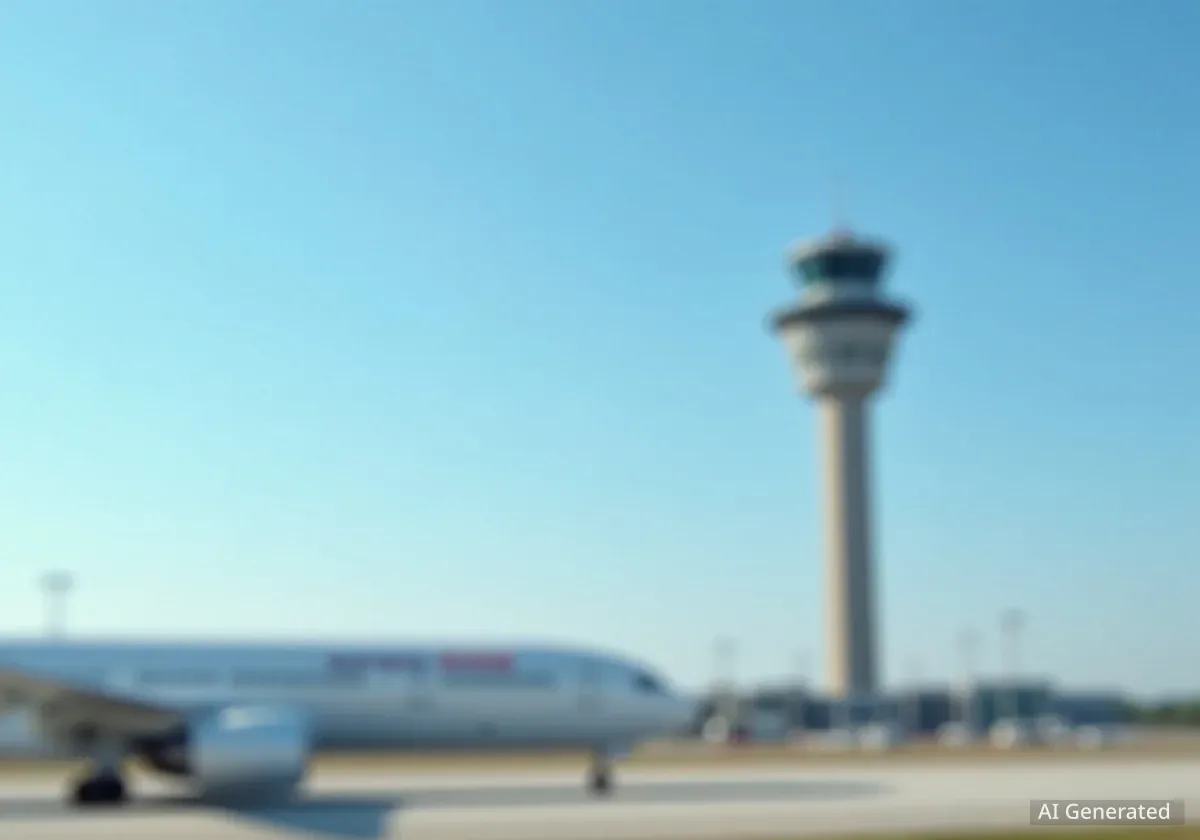Ellison Onizuka Kona International Airport experienced significant flight disruptions on Thursday due to urgent runway repairs. A fracture in the pavement, located directly where aircraft wheels touch down, forced intermittent closures for several hours. The runway successfully reopened around 2 p.m. after crews completed extensive rehabilitation work.
Key Takeaways
- Kona International Airport runway closed intermittently due to pavement fracture.
- Repairs impacted 26 flights, leading to delays and 7 cancellations.
- Crews replaced 1,100 to 1,200 feet of pavement.
- Runway reopened by 2 p.m. on Thursday.
- Extended flight windows are in place to clear backlog.
Runway Fracture Discovered
The issue began early Thursday morning. Airport officials discovered a critical fracture in the runway pavement. This damage was located precisely in the central area where aircraft landing gear makes contact during arrivals and departures. Transportation director Ed Sniffen confirmed the nature of the damage.
The discovery led to immediate action to ensure safety. Intermittent runway closures started around 7 a.m., stopping all flight activities during the repair period. This proactive measure prevented any potential incidents from the compromised surface.
Fact Check
- Location of Damage: Middle of the runway, exactly where wheels touch down.
- Pavement Replaced: Approximately 1,100 to 1,200 feet.
- Closure Start: Around 7 a.m.
- Reopening Time: Approximately 2 p.m.
Impact on Air Travel
The necessary repairs had a direct and immediate impact on air travel to and from Kona. FlightAware, a flight tracking service, reported a total of 26 flight delays. Additionally, seven flights were cancelled entirely due to the runway closure.
Many inbound flights from the mainland were unable to land at Kona. These aircraft were redirected to other Hawaiian airports. Destinations like Oahu and Maui served as alternative landing sites for the diverted planes, causing further inconvenience for passengers.
"We had our contractors come in, ripped out about 1,100, 1,200 feet of pavement throughout that area, rebuilt it, and opened it up by 2 p.m.," stated Transportation Director Ed Sniffen. "During that period, we couldn’t have any flights take off."
Passenger Experience and Diversions
Passengers faced unexpected changes to their travel plans. Those already airborne found themselves heading to different islands. Other travelers experienced extended waits at their departure gates, unsure when their flights would resume.
The diversions caused a ripple effect across the Hawaiian air travel network. Airports on Oahu and Maui had to accommodate additional incoming traffic. This put pressure on ground operations and gate availability at those locations.
Background on Airport Operations
Airport runways are engineered to withstand immense pressure from heavy aircraft landings. Regular inspections are critical to detect any structural weaknesses. Pavement fractures can quickly worsen under continuous use, posing a serious safety risk to all flights.
Repairing such damage often involves removing affected sections and laying new asphalt or concrete. This process requires specialized equipment and skilled crews, as precision is vital for runway integrity.
Rapid Repair and Reopening
Crews moved quickly to address the damage. Contractors worked to remove the compromised section of pavement. They excavated approximately 1,100 to 1,200 feet of the affected runway area. Following removal, new pavement was laid down and cured.
The swift response allowed the runway to pass final safety checks. By 2 p.m. on Thursday, the runway was declared safe and operational. This rapid turnaround minimized the overall disruption, despite the initial impact on dozens of flights.
Mitigating Ongoing Delays
To help clear the backlog of affected travelers, airport authorities implemented measures for Thursday night. The window for flight arrival and departure times was extended. This allows airlines more flexibility to get passengers to their intended destinations.
Officials aim to ensure that all travelers who wish to fly into or out of Kona can do so. The extended operational hours are a direct response to the earlier delays and cancellations. This helps accommodate rescheduled flights and passengers.
- Number of Delays: 26
- Number of Cancellations: 7
- Redirected Flights: Many mainland flights diverted to Oahu and Maui.
The incident highlights the critical importance of airport infrastructure maintenance. Even minor damage to a runway can lead to widespread travel disruptions. The quick and effective repair work at Ellison Onizuka Kona International Airport prevented a prolonged shutdown, allowing operations to resume within hours.
Travelers are still advised to check their flight status directly with their airlines. While the runway is open, residual delays from the morning's repairs may still affect schedules throughout the evening and into Friday.





